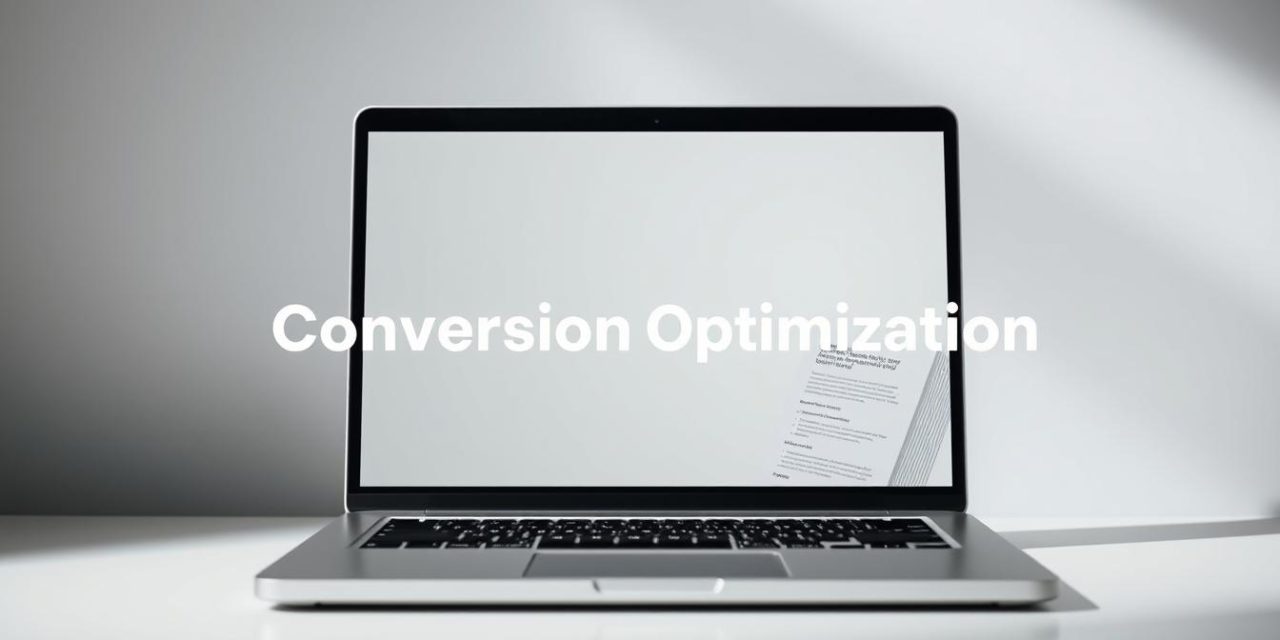Have you ever felt the frustration of pouring effort into attracting website visitors, only to watch them leave without taking action? I’ve been there too. Years ago, my team celebrated hitting 10,000 monthly visits—until we realized fewer than 2% became customers. That moment taught me a hard truth: traffic means little without meaningful engagement.
This guide exists to help you avoid that pitfall. Instead of chasing endless clicks, we’ll focus on what truly matters: turning interest into results. Whether you’re refining a landing page or rebuilding your entire sales funnel, small strategic shifts can dramatically improve your outcomes.
Imagine your site as a digital handshake. Every element—from headlines to button colors—shapes whether visitors feel understood or overwhelmed. By prioritizing user experience and clarity, you create paths that feel natural, not forced. The best part? You don’t need more traffic to see progress. Even modest improvements in your rate of success compound over time.
Table of Contents
Key Takeaways
- Turning visitors into loyal customers requires more than just attracting traffic
- Strategic adjustments to your website can significantly boost engagement and sales
- Focus on maximizing value from existing audiences before expanding reach
- Tailored approaches work better than generic templates for long-term growth
- Measurable improvements often stem from subtle, user-centered changes
Introduction to Conversion Optimization
What if you could transform casual browsers into committed customers without increasing traffic? This strategic approach lies at the heart of effective digital engagement. Let’s explore how systematic improvements can turn your site into a results-driven asset.
What Does This Process Involve?
Conversion rate optimization (CRO) focuses on enhancing the percentage of visitors completing key actions. These might include purchasing products, subscribing to services, or downloading resources. Unlike random changes, it’s a data-driven method to identify what truly resonates with your audience.
« Great digital experiences don’t happen by accident—they’re built through deliberate testing and refinement. »
Modern teams prioritize this practice because attracting traffic without meaningful outcomes wastes effort. By streamlining user paths and removing friction points, you help people achieve their goals while advancing yours.
The Business Impact of Strategic Refinement
Consider these comparisons:
| Metric | Without CRO | With CRO |
|---|---|---|
| Lead Generation | 100/month | 180/month |
| Average Order Value | $75 | $112 |
| Customer Retention | 22% | 41% |
Businesses using conversion optimization often see 2-3x improvements in marketing efficiency. This multiplier effect lets you achieve more with existing resources while building stronger client relationships. The key lies in continuous testing and adapting to user needs.
Understanding Conversion Optimization Fundamentals

What transforms a curious visitor into a committed buyer? The answer lies in mastering how audiences interact with your digital space. Let’s explore the core principles that turn passive browsing into meaningful engagement.
Definition and Key Concepts
Conversion rate optimization (CRO) helps businesses get more value from their current traffic. Instead of chasing new visitors, it focuses on guiding existing ones toward specific goals. These goals range from newsletter sign-ups to completed purchases—each representing a step toward business growth.
Effective strategies blend psychology with data analysis. For example, simplifying checkout processes can boost sales by 35% for e-commerce sites. Users often abandon carts due to complex forms or unexpected costs.
| Conversion Type | Example | Business Impact |
|---|---|---|
| Micro-Conversion | Downloading a guide | Builds lead pipeline |
| Macro-Conversion | Product purchase | Direct revenue driver |
| Custom Conversion | Service inquiry form | Generates qualified leads |
Successful implementation requires understanding your audience’s needs. A/B testing different page layouts might reveal that users prefer video demonstrations over text descriptions. This insight allows you to create more compelling content.
Teams using CRO typically see 20-30% improvements in key metrics within 3 months. The approach works best when combined with regular user feedback and behavior tracking tools. Small tweaks to call-to-action buttons or page loading speeds often yield significant results.
Calculating Conversion Rates
How do successful businesses measure their digital success? The answer lies in precise calculations that reveal how effectively your site turns opportunities into outcomes. Let’s break down the math behind meaningful metrics.
Simple Formulas Explained
Your conversion rate shows what percentage of visitors complete desired actions. Use this formula:
(Conversions ÷ Total Visitors) × 100 = Conversion Rate
Example: 18 purchases from 450 visitors equals (18/450)*100 = 4%. This means 4% of visitors became customers. Ruler Analytics found most industries average 2.9%, while online stores typically see 2.5-3%.
| Industry | Average Rate | High Performers |
|---|---|---|
| E-commerce | 2.8% | 5.3% |
| SaaS | 3.1% | 7.2% |
| Education | 2.4% | 4.6% |
Tools and Techniques for Accurate Data
Reliable tracking requires the right systems. Platforms like Google Analytics automate calculations while showing user paths. Three essentials for clean data:
- Define conversions clearly (purchases, sign-ups, downloads)
- Segment results by traffic source or device type
- Review weekly/monthly trends to spot patterns
Advanced teams use heatmaps to see where visitors click and session recordings to identify form abandonment points. Always test your tracking setup—incorrect data costs more than no data.
CRO in Digital Marketing Strategy

When search visibility meets strategic design, websites transform into high-performing assets. Combining SEO practices with conversion-focused adjustments creates a multiplier effect—better rankings drive more visitors, while refined user experiences turn those visits into measurable outcomes.
Where Visibility Meets Action
SEO brings people to your door. CRO ensures they stay for dinner. While one focuses on attracting organic traffic, the other perfects how visitors interact with your content. Together, they form a complete growth engine.
Consider these complementary focuses:
| SEO Priority | CRO Focus |
|---|---|
| Keyword relevance | User intent alignment |
| Backlink quality | Page layout effectiveness |
| Content depth | Call-to-action clarity |
Businesses using integrated approaches often see 40% faster growth than those treating these as separate tasks. Start by mapping search queries to landing page content—ensure what brings visitors matches what you offer.
Effective integration begins during planning. Build pages that answer search needs while guiding users toward decisions. For example, pages targeting « best accounting software » should both rank well and clearly present trial sign-ups.
« Aligning search intent with conversion paths turns casual researchers into committed buyers. »
Track progress using combined metrics—monitor rankings alongside form completions. Tools like heatmaps reveal if visitors engage with key elements after arriving through organic traffic growth strategies. This dual perspective helps refine both visibility and effectiveness.
Enhancing Website Elements for Conversions
Your website’s design directly shapes how visitors interact with your content. Strategic adjustments to key pages can transform passive browsing into meaningful engagement while maintaining professional credibility.
Core Components of High-Performing Pages
Homepages act as digital storefronts. Clear navigation paths and prominent calls-to-action guide users toward solutions. For example, placing service details above the fold increases exploration by 62%.
Landing pages drive specific actions, achieving a 23% success rate for sign-up forms. Remove distractions like excessive menus to keep focus on your primary goal. Ensure mobile responsiveness—60% of traffic comes from handheld devices.
Speed impacts decisions more than most realize. Improving loading speeds by one second can boost engagement by 9%. Pair technical refinements with trust-building elements like client testimonials to ease concerns.
Test different layouts regularly. Simple changes—like moving contact buttons or simplifying forms—often yield measurable improvements. Prioritize user needs, and results will follow naturally.
FAQ
How does conversion optimization improve my website’s performance?
Conversion optimization refines your site’s design, content, and user flow to guide visitors toward specific actions—like purchases or sign-ups. By testing elements like headlines, CTAs, and layouts, you reduce friction and build trust, which directly boosts engagement and revenue.
What tools are essential for tracking conversion rates?
Google Analytics and Hotjar are widely used for monitoring user behavior. Platforms like Optimizely or Unbounce help run A/B tests, while heatmaps from Crazy Egg reveal where visitors focus. Pair these with CRM systems like HubSpot to align data with customer insights.
Can CRO work alongside SEO strategies?
Absolutely. While SEO drives traffic, CRO ensures that traffic converts. For example, optimizing meta descriptions (SEO) and refining landing page CTAs (CRO) together create a seamless journey from search to sale. Tools like SEMrush integrate both approaches for cohesive campaigns.
Why do landing pages need frequent optimization?
Visitor preferences and market trends shift constantly. Testing variations of headlines, images, or forms keeps your pages aligned with audience expectations. Brands like Shopify update landing pages quarterly to maintain relevance and capitalize on seasonal demand.
How long does it take to see CRO results?
Initial changes—like simplifying checkout steps—can yield quick wins in days. However, comprehensive strategies (e.g., multi-step funnel redesigns) may take 3–6 months. Consistent testing ensures gradual, sustainable growth rather than one-time spikes.
What’s the biggest mistake businesses make with CRO?
Focusing solely on aesthetics over functionality. A visually stunning site that confuses users harms conversions. For instance, Apple prioritizes intuitive navigation alongside minimalist design—proving clarity drives action better than complexity.





